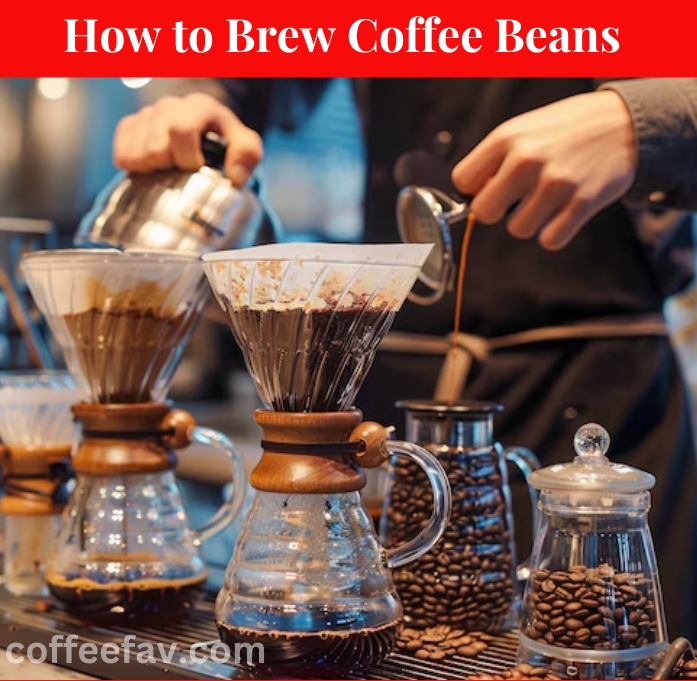Different Types of Coffee Grinders
If you are making espresso, pour-over, French press, drip, or cold brew coffee, the type of coffee grinder you use can significantly affect the taste, aroma, and overall coffee experience. Different types of coffee grinders, like electric and manual coffee grinders, play a crucial role in determining grind quality. Additionally, they are best suited for different settings.
Choosing the right coffee grinder can be overwhelming. In this article, we will discuss various types of coffee grinders, their pros and cons, and which brewing methods they are best suited for.
Types of Coffee Grinders
Here are the different kinds of coffee grinders:
1. Blade Grinders
For coffee lovers seeking a budget-friendly and easy way to grind their beans at home, blade grinders are a popular choice. These grinders use a spinning blade to chop coffee beans into smaller particles.
How They Work:
Blade grinders function like food processors. Inside the grinder, a sharp blade spins at high speed, chopping the coffee beans into a coarse or fine grind depending on grinding time.
Pros:
- Affordable: A cost-effective option, perfect for beginners.
- Easy to Use: Simple control system, very user-friendly.
- Compact: Small and easy to store, ideal for limited kitchen space.
Cons:
- Inconsistent Grind: Produces uneven grind sizes, affecting flavor consistency.
- Heat Generation: High-speed blades generate heat, which can alter the taste of coffee.
- Limited Settings: Minimal control over grind coarseness.
Best For:
- Entry-level coffee drinkers.
- Brewing methods less sensitive to grind consistency, like drip coffee makers or French presses.
2. Burr Grinders
For those seeking precision and consistency, burr grinders are the best option. They provide uniform grind size, which is essential for balanced coffee flavor.
Types of Burr Grinders:
- Flat Burr Grinders: Use flat burrs and are often found in professional settings.
- Conical Burr Grinders: Quieter and generate less heat, preserving the coffee’s natural flavors.
How They Work:
Burr grinders use two strong, sharp burrs to grind coffee beans evenly, ensuring optimal flavor extraction.
Pros:
- Consistent Grind: Produces uniform grind sizes for better extraction.
- Customizable Settings: Adjustable grind settings for various brewing methods.
- Minimal Heat: Reduces heat generation, preserving coffee flavor.
Cons:
- Expensive: Higher cost compared to blade grinders.
- Heavy: Larger and heavier, requiring more storage space.
Best For:
- Espresso coffee lovers.
- Precision brewing methods like pour-over, AeroPress, and cold brew.
3. Manual Grinders
Also known as hand grinders, manual coffee grinders offer control and consistency. They are compact and do not require electricity, making them ideal for travel.
How They Work:
They use a hand crank to rotate burrs, grinding coffee beans to the desired size.
Pros:
- Portable: Small and lightweight, great for travel.
- Quiet: Much quieter than electric grinders.
- Affordable: High-quality manual grinders are budget-friendly.
Cons:
- Time-Consuming: Grinding manually takes longer.
- Effort Required: Grinding large amounts of coffee can be challenging.
Best For:
- Travelers and campers.
- Small-batch brewing methods like AeroPress, pour-over, or French press.
4. Electric Grinders
For those needing to grind large amounts of coffee quickly, electric grinders are the best choice. They offer speed, efficiency, and convenience.
How They Work:
Powered by electricity, these grinders automate the grinding process, making it faster and easier.
Types of Electric Grinders:
- Blade Grinders: Affordable but produce inconsistent grind results.
- Burr Grinders: Provide adjustable grind settings for different brewing methods.
Pros:
- Fast: Quickly grinds large quantities of beans.
- User-Friendly: Easy operation with adjustable grind settings.
Cons:
- Expensive: High-quality electric burr grinders can be costly.
- Noisy: Louder than manual grinders.
- Bulky: Takes up more counter space.
- Requires Power: Needs an electrical source.
Best For:
- Busy households and offices.
- Coffee drinkers who prioritize speed and efficiency.
5. Specialty Grinders
Designed for precision, specialty grinders cater to specific brewing techniques or bean types, offering advanced features for coffee connoisseurs.
How They Work:
Most use burr mechanisms for consistency and precise grind size adjustments.
Pros:
- Precision: Optimized for specialized brewing styles.
- Advanced Features: Includes customizable grind size, speed settings, and more.
Cons:
- Expensive: Among the most costly grinders.
- Limited Flexibility: Designed for specific tasks and may not suit other brewing methods.
Best For:
- Espresso and Turkish coffee lovers.
- Coffee enthusiasts seeking ultimate control over their grind.
How to Choose the Right Grinder
Consider these factors when selecting a coffee grinder:
1. Brewing Method
Different brewing styles require different grind sizes:
- Coarse: French press.
- Medium: Drip coffee.
- Fine: Espresso.
2. Frequency of Use
- Regular brewers: Electric grinders are ideal.
- Occasional brewers: Manual grinders are a good option.
3. Budget
- Blade grinders are affordable but less precise.
- Burr grinders provide better grind quality and enhance the coffee experience.
4. Portability
- Travelers and campers should consider manual grinders.
5. Capacity
- For multiple servings, choose a grinder with a larger bean hopper.
Conclusion
From blade to burr, manual to electric, and compact to specialty, there is a coffee grinder for every coffee lover. Your choice depends on your budget, brewing style, and desired grind precision. Investing in the right grinder ensures every cup of coffee you brew is flavorful and satisfying.
FAQ
1. What is the difference between a blade and burr grinder?
- Blade grinders chop beans unevenly, while burr grinders produce a consistent grind.
2. Are manual grinders better than electric grinders?
- Manual grinders offer portability and control, but electric grinders are faster and more convenient.
3. How often should I clean my coffee grinder?
- Clean weekly for optimal performance and flavor.
4. Can I use one grinder for different brewing methods?
- Yes, but adjustable grind settings are essential for versatility.
5. What is the best grinder for beginners?
- A conical burr grinder with simple settings is ideal for new coffee lovers.

